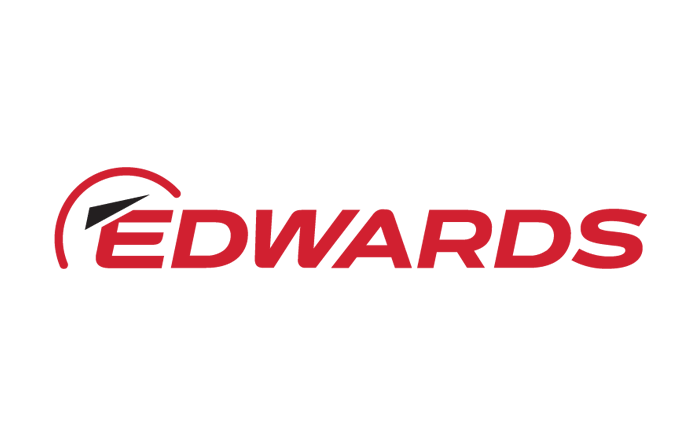Let’s talk about Chamber Solutions
VIDEO & TRANSCRIPT
Edwards’ Dawn Stephenson talks about all things Chamber Solutions.
Every good student should know from the fundamental gas laws, the pressure and temperature of a gas are directly related.
As suppliers of vacuum equipment Edwards need not only to be experts in vacuum pressure but also temperature control. In a semiconductor chamber, where it's our job to control the sub-atmospheric pressure, temperature then, is one of the most influential control knobs.
The temperature range of processors in the semi industry is being stretched at both ends to extremely high temperatures for processed gases the chamber turbo pumps, but also to extremely low temperatures for the wafer and chuck.
To give an example of a high temperature requirement, the combination of in-situ deposition and new materials means that we are having to manage deposition throughout the entire vacuum system. In today's processes we need to maintain the entire gas path through the turbo pumping source to above 150 degrees c. Low temperatures increase the directionality and selectivity of etch processors and so today we need wafer temperatures to be below minus 87 degrees c.
But if you allow for practical heat transfer limitations and the exothermic nature of some reactions we really need wafer temperatures to be below minus 110 degrees or even minus 120 degrees c.
Edwards new division is called Semiconductor Chamber Solutions. It is made up of turbo and cryo technologies to extend Edwards’ process capability in both pressure and temperature. The turbo core technology team are focused on thermal isolation and optimisation. In fact, they have developed a new dynamic rotor temperature sensor and are also investigating new materials, which can achieve turbo pump temperatures right up to 200 and potentially 300 degrees c.
Meanwhile our cryo technology team are working on mixed refrigerant joule Thomson cycles, which can really provide the power that will be needed to get to those wafer temperatures of minus 120 degrees c.
There are ways in which Edwards’ turbo and cryotechnologies could work together. It's known that the presence of water vapor can increase the particle formation in some processes such as PVD selective silicon edge. However in the submillator range, water vapor is the primary constituent of the chamber environment. Water vapor is more difficult to pump than most of the gases. Most gas molecules tend to bounce off each other, bounce off the chamber walls and bounce off the turbo inlet blades, which helps direct them through the turbo and out of the chamber. But the low energy level over water vapor molecule means that it tends to stick to the surfaces it collides with, rather than bounce off and so a turbo pump is not the most effective way to remove water vapor.
However, a cryogenic pump is just not practical, as the sole chamber pump, because if it's trapping all of the molecules then it means it would need frequent regeneration, which would just mean an unacceptable pumping efficiency.
But, with the combination of a turbo and a water pump we have an integrated solution. That could really reduce the water vapor partial pressure, lower the base pressure, which should reduce the particle count. That can lead to improvements in defectivity and in it could increase yield, which is the holy grail in chip manufacturing.
Summary
We are responsible for controlling the chamber environment and we are focused on improvement. Edwards new Semiconductor Chamber Solutions division, with experts in both vacuum pressure and temperature control, will enable us to pioneer solutions, both hot and cold, for Edwards’ customers.
Dawn Stephenson
Business Development Manager


